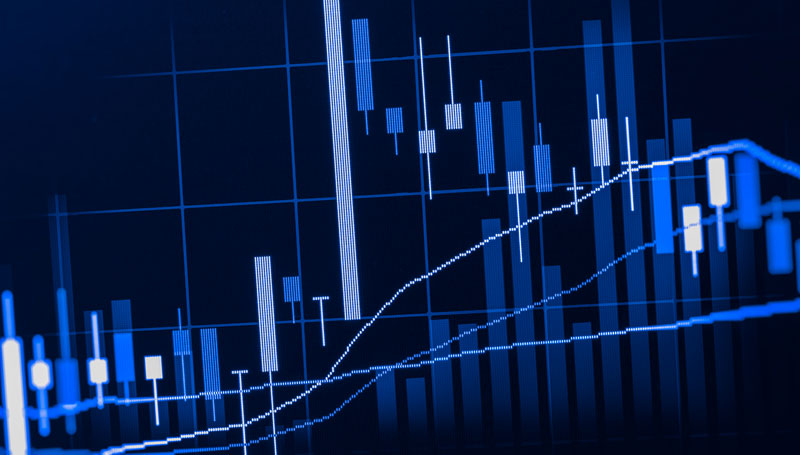

26.01.2020 – Special Report. Wait and see is often the motto of gold bulls. Because while high-tech investors or Bitcoin disciples like to breathlessly chase the short-term trend – and get shaken up accordingly – gold bugs are much more patient. And so they may soon have reason to celebrate. For right now an enormously bullish chart formation is forming, which naturally fits the entry theme of “drinking tea”: A gigantic long-term cup with a handle.
Cup formation over a decade
We don’t adorn ourselves with other people’s feathers: The investor Chris Kimble from the financial blog “See it Markets” noticed the huge cup. The left edge of the cup formation would have been formed in August 2011. The right edge was formed last summer with the all-time high at 2069 US dollars. Since then, the gold price has retreated somewhat and initiated the sideways-downward movement typical of the handle formation.
Short setback to 1,550 dollars possible
Last week Kimble wrote: „Gold has completed the ‘cup‘ pattern and is currently pulling back into what could be the ‘handle‘ part of the formation. Ideally, Gold bulls want to see a decline down to the $1550-$1600 level before another big rally begins.“ Shall mean: So gold bulls will have to suffer a little more before it might take off.
Kimble also backed up his observation with Fibonacci numbers: „As we noted back in the spring of 2020, the Fibonacci symmetry of this cup formation is very intriguing. Gold peaked at its 261% Fibonacci extension price level in 2011 at (1) and again in 2020 at (2) – this formed the ‘cup‘. And a pullback into the 38.2% Fibonacci of the ‘cup‘ formation would be an ideal spot for the ‘handle‘ to form.“
Next stop: Gold 3000
Does the cup even need a handle before it goes up? “Not necessarily… but it sure would help gold get to $3,000 a lot sooner.” So that’s the price target for the investor: $3,000 an ounce. If other chartists spot it on their trading platforms, it could all go down quite quickly. Chart analysis can be that simple – sometimes it becomes a herd instinct through a self-fulfilling prophecy.
25,000 dollars in ten years
Interestingly, Eirk Lytikainen of RealInvestmentadvice.com also recently saw almost exactly the entry level mentioned above by Kimble. The technical analysis shows 1,800 and 1,650 dollars per ounce as a good entry. And then he went into the full swing: „We will not be surprised to see $25,000 per ounce of gold by the year 2030. It will likely be a volatile ride higher, with large drawdowns along the way.“
Devaluation of paper money
But so that the friends of fundamental analysis also get their money’s worth, here is once again the background as to why gold could rise. Of course, you have long been aware of this through our well-founded Special Reports: the gutting of the dollar, euro and co. through gigantic Corona stimuli and endless quantitative easing. In other words: the digital printing press is running non-stop, the money supply is massively expanded. Let’s let Alasdair Macleod of GoldMoney.com have his say: He assumes that the year 2021 will bring the end of printed money, first and foremost the US dollar. The M1 money supply has increased extraordinarily and the process is continuing.

The chart is not just a result of monetary policy’s reaction to Covid-19, he said. Rather, the money supply has increased over the years, and now things are gradually becoming hyper-inflationary. The Federal Reserve and the US Treasury would have to work together to save the US economy from crashing – and therefore the dollar would be sacrificed.
We are curious to see if the gold bulls are right – and will keep an eye on the matter for you. Perhaps a deflationary crash is in the offing, with everyone rushing into the dollar, needing cash and selling precious metals. The Bernstein Bank wishes you successful trades and investments!
Important Notes on This Publication:
The content of this publication is for general information purposes only. In this context, it is neither an individual investment recommendation or advice nor an offer to purchase or sell securities or other financial products. The content in question and all the information contained therein do not in any way replace individual investor- or investment-oriented advice. No reliable forecast or indication for the future is possible with respect to any presentation or information on the present or past performance of the relevant underlying assets. All information and data presented in this publication are based on reliable sources. However, Bernstein Bank does not guarantee that the information and data contained in this publication is up-to-date, correct and complete. Securities traded on the financial markets are subject to price fluctuations. A contract for difference (CFD) is also a financial instrument with leverage effect. Against this backdrop, CFD trading involves a high risk up to the point of total loss and may not be suitable for all investors. Therefore, make sure that you have fully understood all the correlating risks. If necessary, ask for independent advice.
